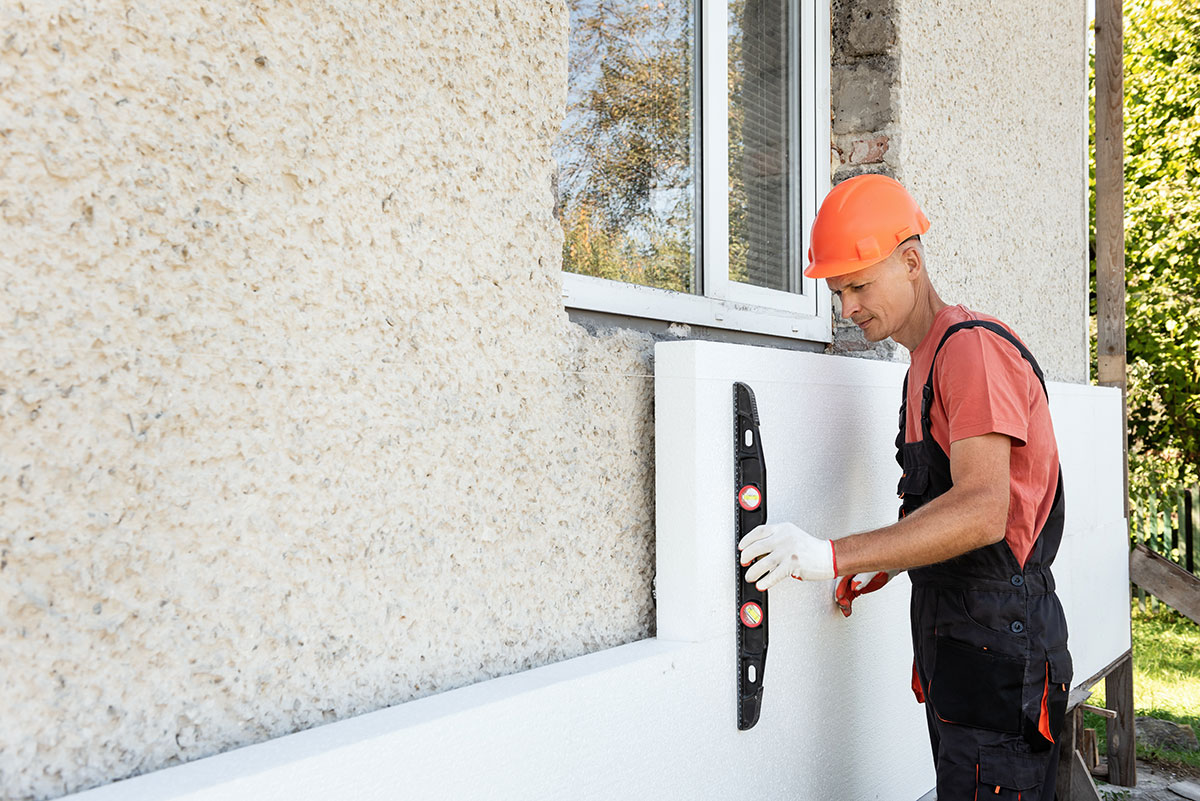External Wall Insulation is a protective layer of insulation fixed to the outside of a home to protect it against heat loss and
With its high thermal performance and an SEAI grant of up to €8,000, external wall insulation can be a perfect choice for improving the thermal performance of your home.
The different choices of final render gives homeowners the ability to update the appearance of their house while protecting it from the elements as well.
By reducing heat loss external wall insulation can help homeowners to reduce their energy bills and carbon footprint.

Key takeaways:
Table of Content
What is External Wall Insulation
External Wall Insulation comprises of multiple layers of insulating material and a render which both provides thermal and weather protection for the building, and gives it an updates appearance.
The innermost layer of the wrap consists of the insulation, typically either mineral wool rolls or batts or rigid insulation boards, which is mechanically affixed to the outside wall of the house. An adhesive bonding layer is then applied to the outside of the insulation with an embedded mesh before a final render is applied on top to provide an attractive finish.
For solid walls or homes with smaller cavity spaces, external insulation can be the best alternative to cavity wall insulation, though one with greater labour requirements.
External Insulation Components
Installing external wall insulation upgrades may also require windows or window sills to be replaced depending on the property and the thickness of the wrap.
The thermal performance of the building fabric after installing wall insulation is measured by its U-value, expressed as W/m²K. This measures how much heat passes through an area, taking into account values in the complete project such as the thickness of the insulation layer, and other factors.
Benefits of External Wall Insulation
If you are considering home insulation, consider the following benefits of external wall insulation.
Downsides of External Wall Insulation
There are also some potential drawbacks to external wall insulation in comparison to other options.
External Wall Insulation Cost
The cost of applying insulation to the exterior of a building will vary depending on several factors.
A house with many small areas, corners, and windows will be a more complicated job, driving up the labour costs. The price will also of course be higher if you have a larger home with a greater surface area to insulate.
Depending on the type of house you have, external wall insulation can cost anywhere from €10,000 – €30,000 excluding grant savings. These are only estimated ranges, and an assessment of your home is needed for an accurate figure.
Is external wall insulation worth it?
A poorly insulated home can be extremely expensive to keep heated, and this is particularly true of older buildings built to lower standards of energy efficiency than modern homes.
If your house was built prior to the 1930s it is likely a solid wall, without a cavity space. Even if it was built in the decades later, it might not be suitable for cavity insulation.
In this case, an external insulation wrap will be your best option to add a layer of insulation to the outer walls of your home.
For older buildings external insulation can also provide a facelift with a new render in an appearance of your choice. All of this makes external insulation an ideal choice for older properties, especially those undergoing a complete renovation.
External insulation can also be installed alongside Cavity Wall insulation in some cases. This might provide an additional benefit if your wall only has a small cavity and you wish to increase its performance.
External Wall Insulation Grants
The SEAI offers grant funding for private homeowners and Approved Housing Bodies to get external insulation installed. The size of the grant depends on the type of property you have, with larger grant values for AHBs.
For private homeowners an SEAI grant of up to €8,000 is available, and AHBs can receive a maximum of €10,000.
The grants are available for all homes which were built and occupied prior to 2011.
| Insulation Type | Private Homeowner Grant | AHB Grant |
| External Insulation (The Wrap) | Apartment (Any) – €3,000
End-Terrace House – €3,500 Semi-Detached/End-Terrace – €6,000 Detached House – €8,000 |
Apartment (Any) – €3,500
End-Terrace House – €4,500 Semi-Detached/End-Terrace – €8,000 Detached House – €10,000 |
Note: Building regulations require that any alteration to 25% or more of a home’s surface area requires that it meet a minimum B2 BER rating or that the heating system and attic insulation comply with the Building Regulation standards.
Any application for an external wall insulation grant from the SEAI requires that you meet these building regulations for it to be paid.
Homeowners availing of wall insulation grants from the SEAI are also required to see that the insulation achieves a U-value of 0.27 W/m2K
Types of External Wall Insulation
The two main varieties of insulation used in an external wrap are either rolled wool or rigid boards. The two will differ in price and thermal performance, with different thicknesses needed to meet the U-value required by building regulations.

FAQs
Get in Touch
Get in touch to hear more about how Home Insulation can improve your home life today. Speak with the experts to get a recommendation and quote on what home improvements will suit you best.


